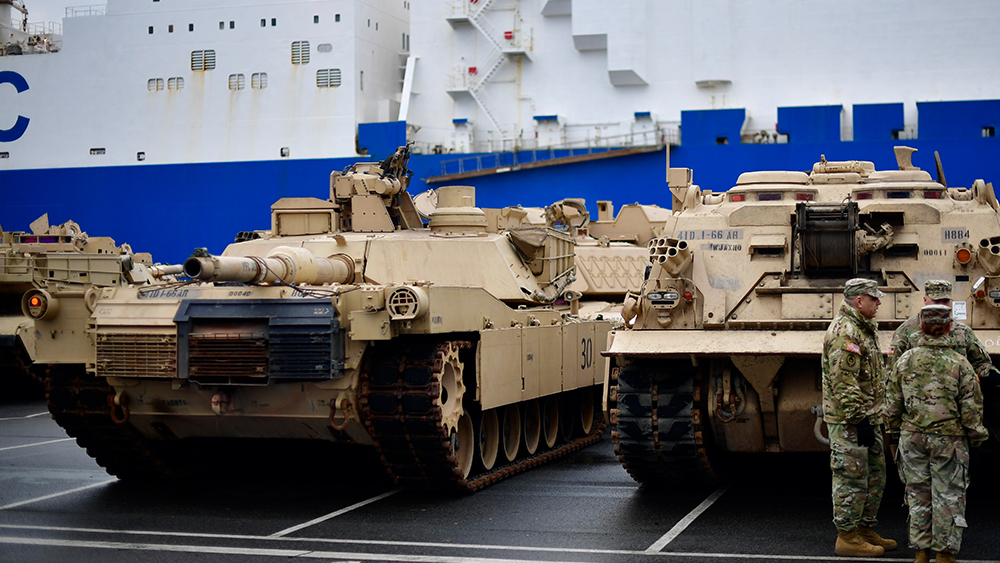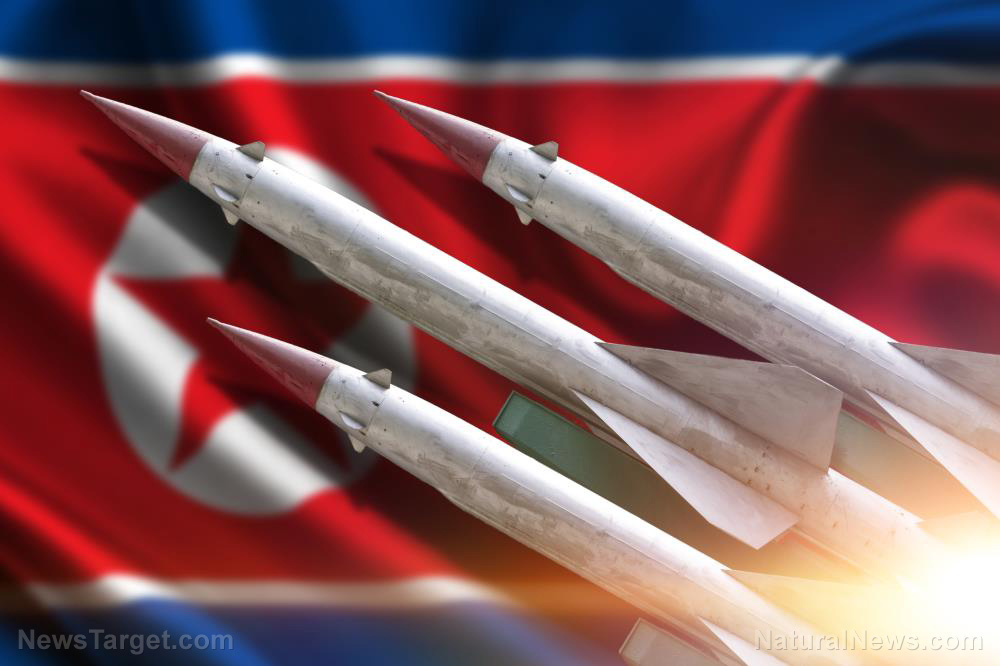Global military spending has ALMOST DOUBLED since the early 1990s
By kevinhughes // 2025-04-09
Tweet
Share
Copy

- Global military expenditure has nearly doubled since the early 1990s, increasing from about $1.3 trillion in 1993 to nearly $2.4 trillion in 2023, with a significant 6.8 percent increase in 2023, marking the steepest year-on-year rise since 2009.
- The region of Asia and Oceania has seen a 277 percent increase in military spending from 1993 to 2023, driven by tensions in the South China Sea, the threat from North Korea and regional security challenges.
- European military spending has significantly increased, especially following the war in Ukraine, as nations bolster their defense capabilities, reflecting heightened security concerns and a need for military preparedness.
- The Americas, led by the United States, remain the highest spending region, with the U.S. accounting for $916 billion, or 37 percent of the global total, emphasizing its commitment to military dominance and addressing threats.
- The U.S., China, Russia, India and Saudi Arabia are the top military spenders, with notable increases in spending driven by regional ambitions, modernization and security threats. Ukraine's spending has also surged to $64.8 billion in 2023, reflecting the impact of the conflict with Russia.
Key players and emerging trends
The distribution of military spending reveals the dominance of a few key players on the global stage:- United States: With a budget of $916 billion, the U.S. continues to lead in military spending, reflecting its role as a global superpower and its focus on maintaining a strong military presence worldwide.
- China: The second-largest spender, China invested $296 billion in its defense efforts in 2023. This growth is driven by China's ambitions for greater regional influence and the modernization of its armed forces, particularly in areas like cyber warfare and missile technology.
- Russia: In response to geopolitical tensions, particularly the conflict in Ukraine, Russia's military spending reached $109 billion in 2023, highlighting its strategic focus on expanding capabilities and asserting its presence.
- India: With a military budget of $83.6 billion, India ranks among the top five worldwide military spenders, motivated by threats from neighboring countries and a spotlight on defense modernization.
- Saudi Arabia: Ranking fifth, Saudi Arabia's military expenditure of $75.8 billion is affected by regional conflicts and the need to secure its borders against different threats.
More related stories:
India choosing to buy Russia’s advanced fifth-generation Su-57 fighter jet over costly American F-35s. U.S. diverts $95M in military aid from Egypt to Lebanon amid human rights concerns and regional security needs. China’s new hypersonic weapon could tip the scales in future conflicts in Taiwan and the South China Sea. Sources include: ZeroHedge.com SIPRI.org [PDF] Statista.com DigitalPhablet.com Brighteon.comTweet
Share
Copy
Tagged Under:
Russia Ukraine China United States North Korea national security military technology Saudi Arabia India Europe big government money supply Asia military tech military spending weapons technology Americas global community Oceania military expenditure
You Might Also Like
China’s rare earth move threatens U.S. military and tech dominance
By Willow Tohi // Share
Greenland’s strategic tensions: A tug-of-war over sovereignty, strategy and alliance
By Willow Tohi // Share
Recent News
Trump’s critical Ukraine minerals deal nears completion
By isabelle // Share
Florida sky mystery: Toxic heavy metals and bioengineered particles found in air and food samples
By finnheartley // Share











